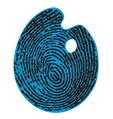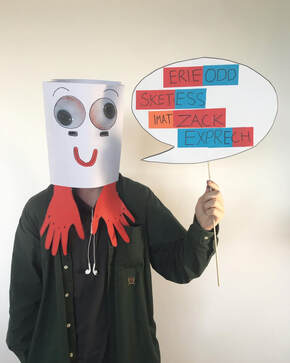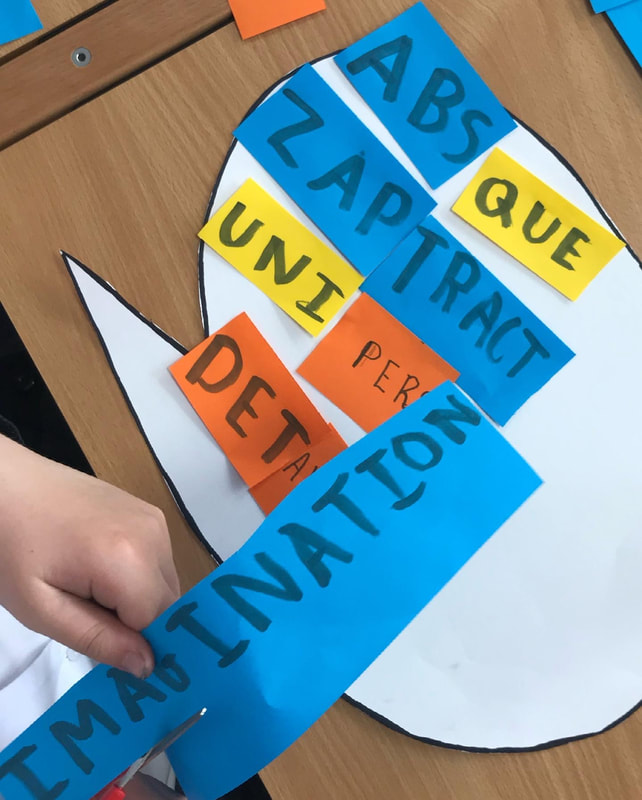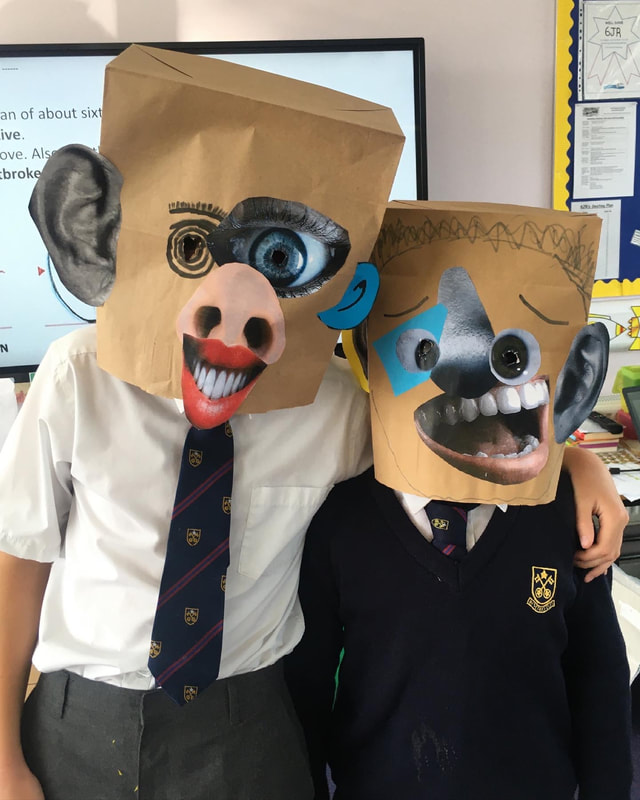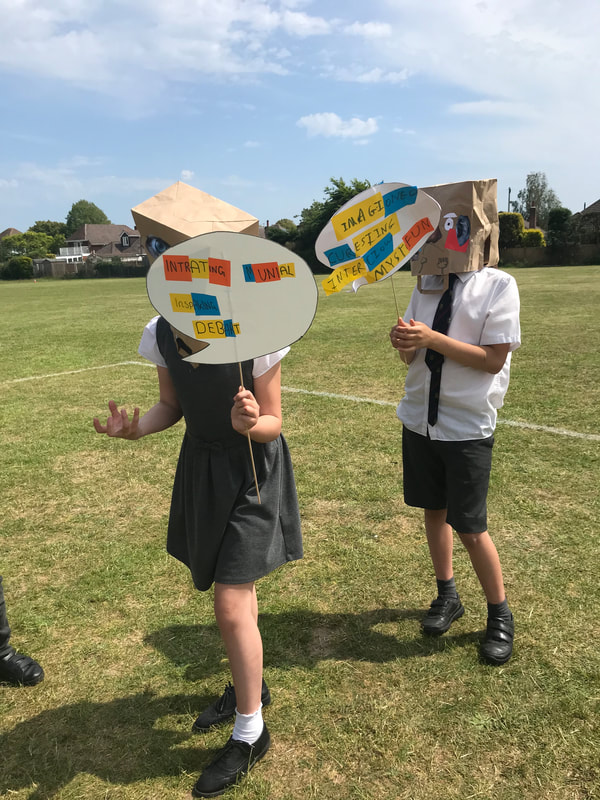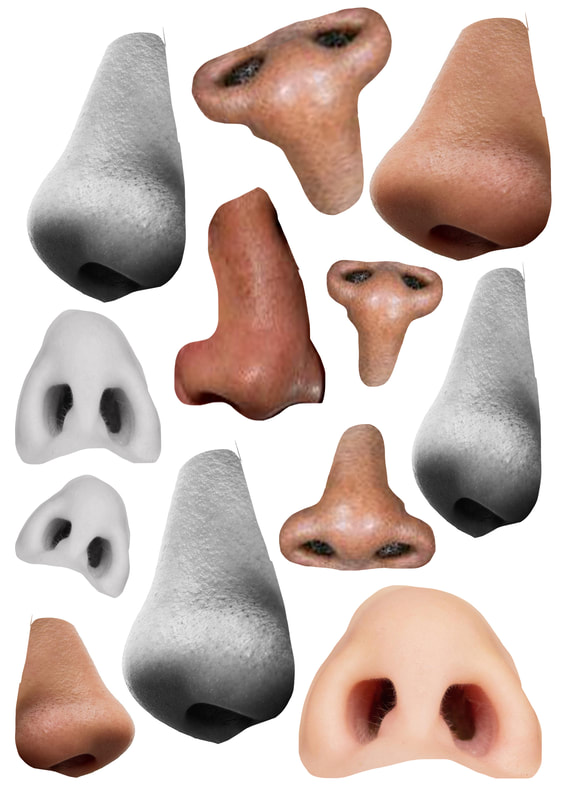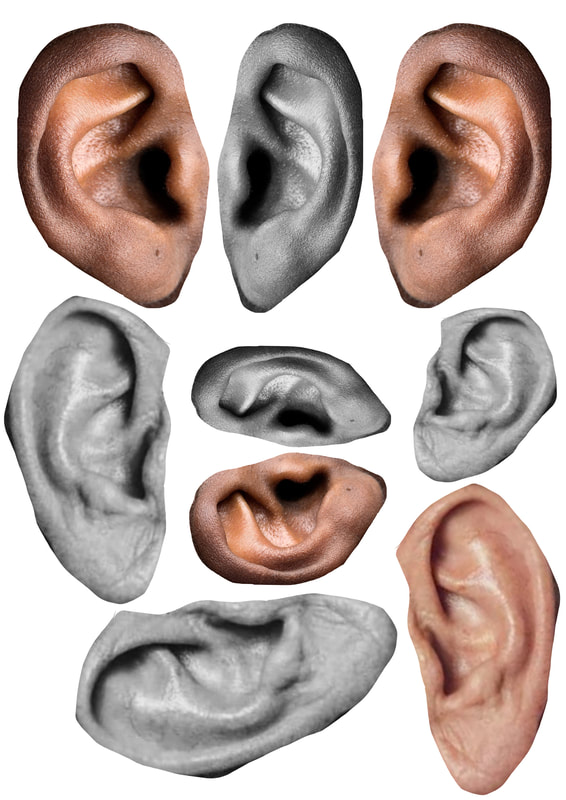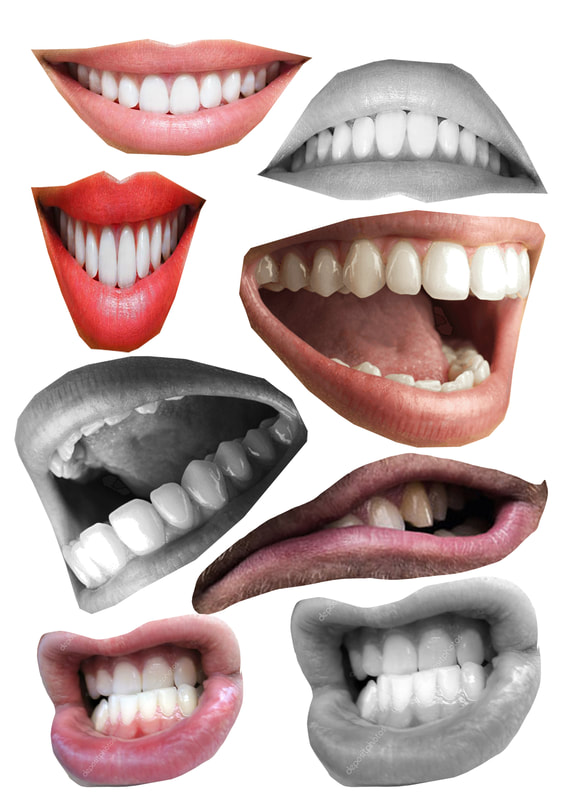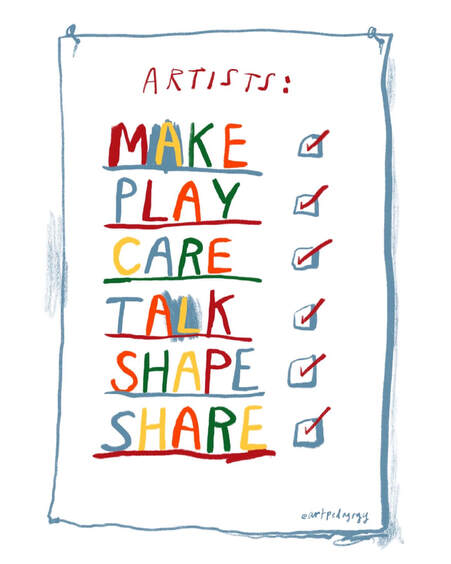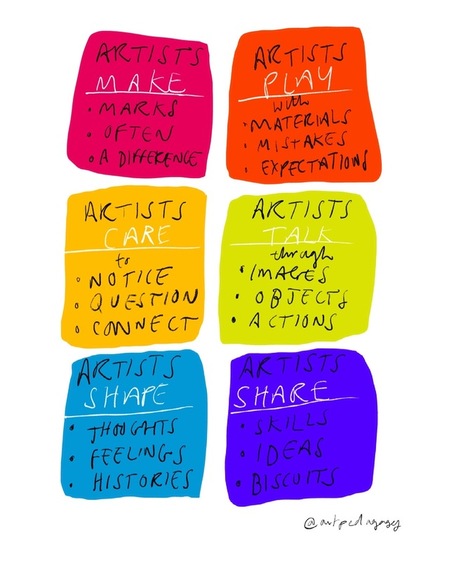PRIMARY RESOURCE: 'DADA' WORKSHOP
I don't want words that other people have invented. All the words are other people's inventions. I want my own. HUGO BALL
|
Why can't a tree be called Pluplusch? HUGO BALL
RESOURCES
|
The following resources, in tandem with the slideshow below, were used for our Year 6 workshop. With Year 12 students we didn't have the paper bags but simply made our own versions with cartridge paper.
|
|
SEQUENCE
PART 1: Considering - and experimenting with - the language of art.
The slideshow (below) contains a variety of prompts to encourage students to write key words on the strips of paper provided. These were then considered, cut and rearranged to make nonsensical words inspired by the examples of Hugo Ball. The following questions help frame this first activity:
The slideshow (below) contains a variety of prompts to encourage students to write key words on the strips of paper provided. These were then considered, cut and rearranged to make nonsensical words inspired by the examples of Hugo Ball. The following questions help frame this first activity:
- What do artists do - and why?
- What words are important to explain this?
- How do artists 'play' - with traditions, ideas, marks (including words), failure ..?
- How might we play with art/words to create signs/speech bubbles that challenge, entertain, confuse, appeal ... (like artists can do)?
The above illustrations set out, or at least hint at, our Threshold Concepts for Art, in a Primary School-friendly format.
The slideshow below introduces these concepts in a sequence that facilitates Part 1 (above) and establishes the inspiration and the spirit of Part 2 & 3 (outlined below):
The slideshow below introduces these concepts in a sequence that facilitates Part 1 (above) and establishes the inspiration and the spirit of Part 2 & 3 (outlined below):
Part 2: Considering expression and emotion; making masks and performances.
Using the slideshow as inspiration, Part 2 invites students to consider expressions and emotions and 'play' with making experimental masks. The following questions help frame this second activity:
- How (over time) have artists grappled with expressing/depicting/responding to/impacting upon human emotions?
- (How) Is it possible to feel a range of emotions at the same time? (For example, as Year 6 students about to begin at Secondary School, do you feel excited alongside a little anxious?).
- How do facial features (vary to) express and show emotion?
- How might you make a paper-bag mask that experiments with these ideas (inspired by Dada collages and performances)?
Part 3: Considering (collaborative) actions and performances as artists.
Also with reference to inspiration within the slideshow, Part 3 is an opportunity for students to collaborate in devising poses, repeated performative actions, chants, marches, nonsensical dialogues in pairs, 1 minute human sculptures ... lots of possibilities (but advisable to prepare a suggested sequence - once those masks go on and the signs are in hand, anything can happen!). The following questions might help here:
Also with reference to inspiration within the slideshow, Part 3 is an opportunity for students to collaborate in devising poses, repeated performative actions, chants, marches, nonsensical dialogues in pairs, 1 minute human sculptures ... lots of possibilities (but advisable to prepare a suggested sequence - once those masks go on and the signs are in hand, anything can happen!). The following questions might help here:
- How do/have artists used their bodies, voices and actions to create art?
- How can creative acts and actions of collaboration, performance or protest be a force for good?
|
|
To conclude, here is a short video clip of some of our antics with Year 6. We had a great day and it felt like we found that sought-after combination of thinking hard and playing in new ways -'serious mischief', indeed!
If you are a teacher or artist working in a school and do use this resource for inspiration, please do consider sharing your results. You can do this on Instagram by tagging @artpedagogy.
If you would like to make a donation to support our creative projects and the ongoing sharing of resources you can do so via the 'Donate' button here. This would be greatly appreciated. All feedback and thoughts very welcome. |
